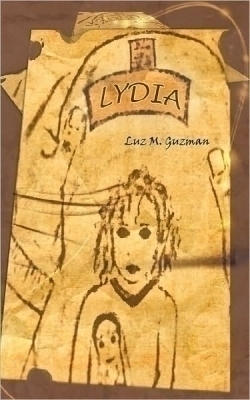Lydia
More of a novella than a novel, Luz M. Guzman’s mystery offers an ensemble cast of interesting characters, including the central one, Lydia, a four-year-old found wandering alone and hungry in the snowbound setting of a small town in New England. Readers soon learn of Lydia’s Latino heritage, and they meet Manny and Rosa Santos, her grandparents from out of state. Readers will also learn of the suicide of Lydia’s mother, a death that has the local sheriff suspicious: “Some pieces don’t fit.” The contents of a suicide note unravel. An envelope full of cash is found pinned to the inside of Lydia’s parka. And there are unsubstantiated claims of a mysterious stranger seen with Lydia and her mother before the mother’s death.
As the no-nonsense sheriff of the close-knit community investigates clues and conducts interviews, culture clashes occur, family rifts are revealed, and characters help or hinder the case. The sheriff’s open dislike of strangers centers on Lydia’s grandparents, who have been welcomed into the home of the lonely, fifty-something widow, Mrs. Hallaway, the boutique owner who first met Lyndia when the lost child appeared at the door to her shop. As Lydia’s family troubles ensue, Mrs. Hallaway is torn between letting the lovable child go and wanting to adopt her. Mrs. Hallaway’s eighteen-year-old friend Stacy helps care for Lydia but has her own problems to resolve with her single-parent father, who appears to be attracted to Mrs. Hallaway. And ninety-year-old Mr. Washington, a character who makes cameo appearances in the story, assists in the take down of a would-be robber, a man with surprising connections to Lydia and her mother.
The characters in Guzman’s well-plotted novel are credible for the most part, but their appearance at the right time and place to apprehend the robber seems too coincidental. Another problem with the book is that it mixes English and Spanish—and not always in a logical manner. Some readers will find parts of the novel difficult to read because of several untranslated Spanish sentences, where phrases or single words would have sufficed. Although Lydia purportedly speaks broken English, all of her dialogue is in standard English. And Mrs. Hallaway does not speak Spanish, so some Spanish dialogue is occasionally translated for her. Reducing the number of or translating the extended Spanish passages would ensure a market share for the book with an English-speaking audience without undermining the integrity of the story. The book’s cover art incorporates a child-like drawing of Lydia against the background of her parka and its name tag. This art is apt and well-done, and the text has only a couple of typographical errors.
Lydia is for readers who like mysteries about kids and families rather than stories about psychos and forensics.
Reviewed by
M. Wayne Cunningham
Disclosure: This article is not an endorsement, but a review. The publisher of this book provided free copies of the book and paid a small fee to have their book reviewed by a professional reviewer. Foreword Reviews and Clarion Reviews make no guarantee that the publisher will receive a positive review. Foreword Magazine, Inc. is disclosing this in accordance with the Federal Trade Commission’s 16 CFR, Part 255.

